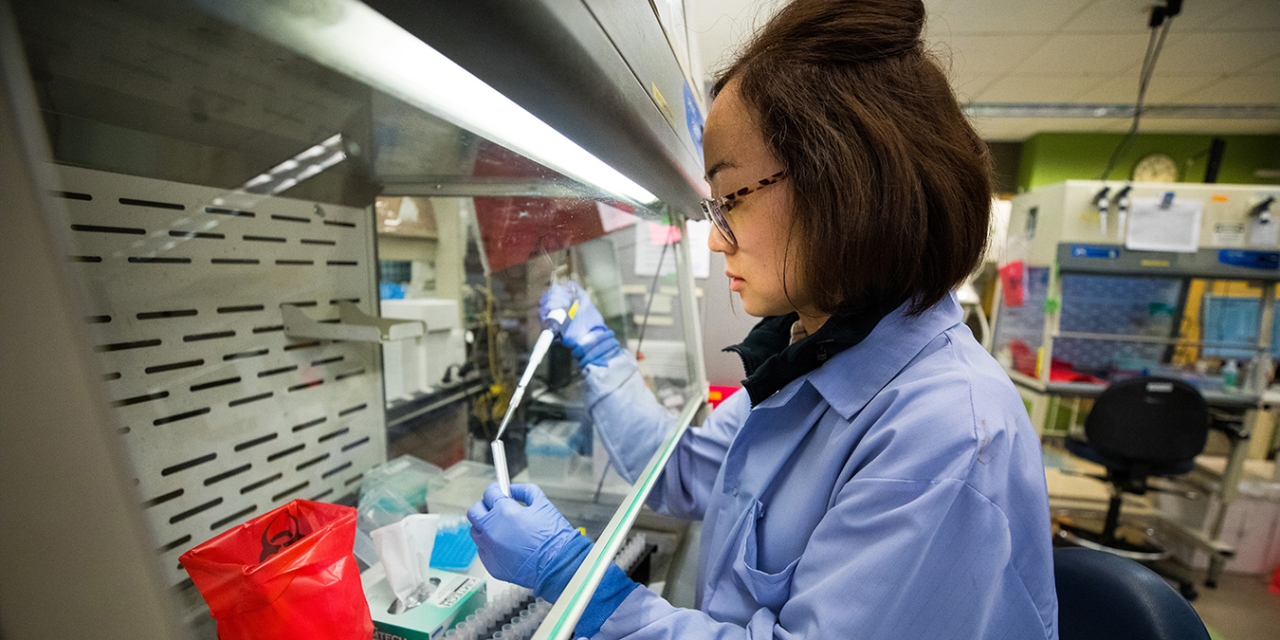The Origins and Spread of COVID-19

The COVID-19 pandemic, caused by the severe acute respiratory syndrome coronavirus 2 (SARS-CoV-2), has had a profound impact on global health, economies, and societies. Understanding the origins and spread of this virus is crucial for developing effective prevention and control measures.
Initial Identification and Origins
SARS-CoV-2 was first identified in Wuhan, China, in December 2019. The initial cases were linked to a seafood market, suggesting animal-to-human transmission as the likely origin. However, the exact source of the virus remains uncertain, with ongoing investigations exploring the possibility of a zoonotic origin or a laboratory-related incident.
Early Stages of the Pandemic and Global Spread
The virus rapidly spread from Wuhan to other parts of China and then to the rest of the world. By March 2020, the World Health Organization (WHO) declared COVID-19 a pandemic, signifying its global reach and the need for coordinated international response.
Key Factors Contributing to Rapid Spread, Who covid 19
Several factors contributed to the rapid spread of SARS-CoV-2, including:
- Human-to-human transmission: The virus spreads easily through respiratory droplets produced when an infected person coughs, sneezes, or talks.
- Asymptomatic transmission: A significant proportion of infected individuals may not experience symptoms or have mild symptoms, making it challenging to identify and isolate infected individuals.
- Global travel and interconnectedness: The ease of international travel facilitated the rapid spread of the virus across continents.
- Lack of early detection and response: Initial delays in recognizing the severity of the outbreak and implementing containment measures contributed to the rapid spread.
Timeline of Significant Events
The COVID-19 pandemic has been marked by a series of significant events, including:
- December 2019: First cases of COVID-19 identified in Wuhan, China.
- January 2020: WHO declares a Public Health Emergency of International Concern (PHEIC) for COVID-19.
- March 2020: WHO declares COVID-19 a pandemic.
- February 2021: First COVID-19 vaccines are authorized for emergency use in several countries.
- October 2021: WHO designates Omicron as a variant of concern, raising concerns about its increased transmissibility.
The Impact of COVID-19 on Society: Who Covid 19

The COVID-19 pandemic has had a profound and multifaceted impact on societies worldwide, disrupting economies, healthcare systems, and daily life. This section explores the various consequences of the pandemic, examining its effects on different aspects of society.
Economic Consequences
The economic consequences of the COVID-19 pandemic have been significant and far-reaching. Global lockdowns and travel restrictions led to widespread business closures, job losses, and supply chain disruptions. The pandemic exacerbated existing economic inequalities, disproportionately affecting low-income communities and vulnerable populations.
- Job Losses: Millions of people worldwide lost their jobs due to business closures and economic downturns. The hospitality, tourism, and retail sectors were particularly hard hit.
- Business Closures: Many businesses, especially small and medium-sized enterprises (SMEs), were forced to close permanently or temporarily due to reduced demand, supply chain disruptions, and government restrictions.
- Supply Chain Disruptions: The pandemic disrupted global supply chains, leading to shortages of essential goods and materials. This impacted production, manufacturing, and distribution across various industries.
Impact on Healthcare Systems
The pandemic placed an immense strain on healthcare systems worldwide, leading to overwhelmed hospitals, shortages of medical supplies, and a surge in demand for healthcare services. The focus on COVID-19 treatment also led to delays in other essential medical care.
- Overwhelmed Hospitals: Hospitals in many countries were overwhelmed with COVID-19 patients, leading to long wait times, bed shortages, and a strain on medical staff.
- Shortages of Medical Supplies: The surge in demand for personal protective equipment (PPE), ventilators, and other medical supplies led to global shortages, impacting healthcare providers’ ability to effectively treat patients.
- Strain on Medical Professionals: Healthcare workers faced burnout, exhaustion, and mental health challenges due to the overwhelming workload and the risk of contracting COVID-19.
Social and Psychological Effects
Lockdowns and social distancing measures, while necessary to curb the spread of the virus, had significant social and psychological consequences. They led to isolation, loneliness, anxiety, and depression, particularly among vulnerable populations.
- Isolation and Loneliness: Social distancing measures led to isolation and loneliness, especially for older adults, individuals living alone, and those with pre-existing mental health conditions.
- Anxiety and Depression: The uncertainty, fear, and stress associated with the pandemic contributed to increased levels of anxiety and depression.
- Domestic Violence: Lockdowns and social isolation led to an increase in domestic violence, as victims were confined with their abusers.
Community and Individual Adaptation
Despite the challenges, communities and individuals around the world adapted to the pandemic in various ways. They found innovative solutions to stay connected, support each other, and maintain a sense of normalcy.
- Virtual Connections: Technology played a crucial role in facilitating virtual connections, allowing people to stay in touch with loved ones, work remotely, and access education and entertainment online.
- Community Support: Communities came together to support vulnerable populations, providing food, essential supplies, and emotional support.
- Creativity and Resilience: Individuals and businesses demonstrated creativity and resilience, finding new ways to work, learn, and entertain themselves during lockdowns.
Responses to COVID-19
The COVID-19 pandemic triggered an unprecedented global response, encompassing a wide range of measures aimed at mitigating the virus’s spread and impact. These responses, while diverse across countries, shared a common goal: to protect public health and minimize societal disruption.
Vaccine Development and Distribution
The development of COVID-19 vaccines was a remarkable scientific achievement, with multiple vaccines being developed and authorized for use within a year of the pandemic’s emergence. This rapid progress was fueled by intense research efforts, international collaborations, and significant financial investments.
The distribution of vaccines, however, posed significant challenges. Initial supply constraints, logistical hurdles, and varying levels of vaccine acceptance across populations led to uneven distribution patterns globally.
- The Covax initiative, launched in 2020, aimed to ensure equitable access to COVID-19 vaccines for low- and middle-income countries. It facilitated the procurement and delivery of vaccines to participating nations.
- Several countries implemented vaccination campaigns, prioritizing high-risk groups, healthcare workers, and vulnerable populations. These campaigns involved large-scale vaccination centers, mobile clinics, and community outreach programs.
- The development of mRNA vaccines, such as those produced by Pfizer-BioNTech and Moderna, represented a significant technological breakthrough. These vaccines utilize messenger RNA to instruct the body to produce the spike protein of the virus, triggering an immune response.
Implementation of Public Health Measures
Public health measures played a crucial role in slowing the spread of COVID-19. These measures, often implemented in conjunction with vaccination efforts, aimed to reduce person-to-person transmission and protect vulnerable populations.
- Mask mandates became widespread, requiring individuals to wear face coverings in public settings. Masks act as a physical barrier, reducing the transmission of respiratory droplets.
- Social distancing guidelines were implemented, encouraging individuals to maintain a safe distance from one another to minimize close contact. This measure aimed to reduce the likelihood of virus transmission.
- Lockdowns, ranging from partial to complete, were implemented in many countries. These measures involved restrictions on movement, gatherings, and business operations to limit the spread of the virus.
- Testing and contact tracing strategies were crucial for identifying infected individuals and their contacts. Testing allowed for early detection and isolation of infected individuals, while contact tracing helped to identify and quarantine potential contacts.
Comparative Responses of Different Countries
Countries adopted diverse approaches to managing the COVID-19 pandemic, influenced by factors such as their healthcare systems, economic conditions, and cultural contexts.
- China, where the virus originated, implemented a stringent “zero-COVID” strategy, characterized by widespread testing, contact tracing, and strict quarantine measures. This approach aimed to eliminate transmission within the country, but it came at a significant economic and social cost.
- The United States adopted a more decentralized approach, with individual states implementing their own public health measures. This led to varying levels of restrictions and public health outcomes across the country.
- European countries implemented a range of measures, including lockdowns, mask mandates, and travel restrictions. The European Union coordinated efforts to procure and distribute vaccines, but individual countries had autonomy in implementing their own public health strategies.
Innovative Solutions and Collaborations
The COVID-19 pandemic spurred innovation and collaboration in various sectors.
- Telemedicine saw a surge in adoption, enabling healthcare providers to remotely consult with patients, reducing the need for in-person visits and minimizing the risk of virus transmission.
- Digital platforms were used to facilitate communication, disseminate information, and support remote learning and work. These platforms helped to maintain social connections and support continuity of essential services during periods of social distancing.
- Research and development efforts accelerated, leading to the development of new diagnostic tools, antiviral treatments, and vaccines. The global scientific community collaborated extensively to share data, accelerate research, and develop solutions to combat the pandemic.
Who covid 19 – While the COVID-19 pandemic brought about significant changes in our daily lives, it also sparked unexpected trends. One such trend was the rise of the McDonald’s Collectors Meal , a nostalgic marketing campaign that capitalized on our collective desire for comfort and familiarity.
This phenomenon highlights the power of nostalgia in a time of uncertainty, reminding us that even amidst global crises, we still crave connections to simpler times.
COVID-19, a virus that dramatically altered our lives, also brought about a shift in how we work and learn. Many people transitioned to home offices, leading to a surge in demand for comfortable and convenient workspaces. A folding computer table and chair became a popular choice, offering flexibility and space-saving solutions.
While the pandemic’s impact on our daily lives is still felt, the need for adaptable workspaces continues to be a valuable lesson learned.

